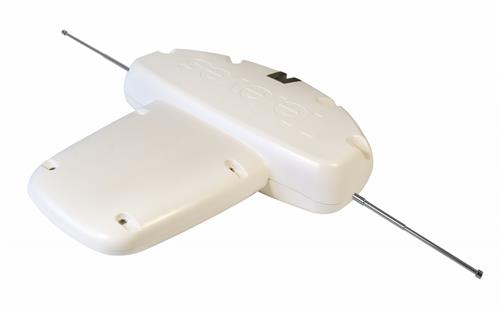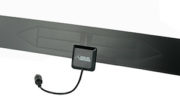One of the most common questions at this blog is about combining antennas. Some of our most popular articles cover the subject. And yet, no matter how much I write on the subject, there’s always another twist that needs explaining.
Case in point
This came through our customer service department:
I have an amplified antenna and I’d like to combine it with a non-amplified antenna. Can you show me how to do this?
I sure would not recommend it. There can be all sorts of problems with combining amplified and non-amplified antennas, not the least of which is the possibility of fire, and no one likes that.
Let’s start with the basics
Let’s start with the idea that if you put electricity into something that shouldn’t have electricity put into it, something bad is eventually going to happen. This is going to happen when you power the antennas. Unless you use a DC block, power is just going to go to both antennas. And putting in a DC block is easy, but you might not want to spend the extra money.
If you power an antenna that doesn’t need power, there’s a possibility that you’ll burn out the balun attached to the non-amplified antenna, or short out any combiners that are present. This is actually not a huge problem, most likely what would happen is that the balun would short and that would be the end of that. Still, a problem is a problem.
Powering things properly
Then there’s the issue of getting the current from to the right place. Amplified antennas used power injectors plugged into the wall, and if you split that power by using a combiner, you’re not necessarily sending the right amount of power to the antenna that does need it. As I said above you can use a DC block at the combiner to make sure that the power doesn’t go to the antenna that doesn’t need it (eliminating damage to it) but that doesn’t mean all the power will go where you do need it. You would have to use a multimeter to test, and if necessary, go to a different power injector. This could take a little bit of trial and error and more than a little expense.
The real core of the problem
Finally, when you combine an amplified antenna with a non-amplified one, you’re combining two signals that are wildly different. If you are putting 20dB of amplification into one side and not the other, that means the signals from the amplified antenna are 100x stronger than the non-amplified one. That could cause problems with your TV’s tuner.
Folks, when you look at all the numbers, combining an amplified and a non-amplified antenna just doesn’t make sense. You’re much better off adding a preamplifier to the signal from two unamplified antennas once you’ve combined them. At that point you have all the signals at the same level and everything works as it is supposed to.
Instead of trying to combine two antennas that really shouldn’t go together, shop for the right antenna from the great selection at Solid Signal.





